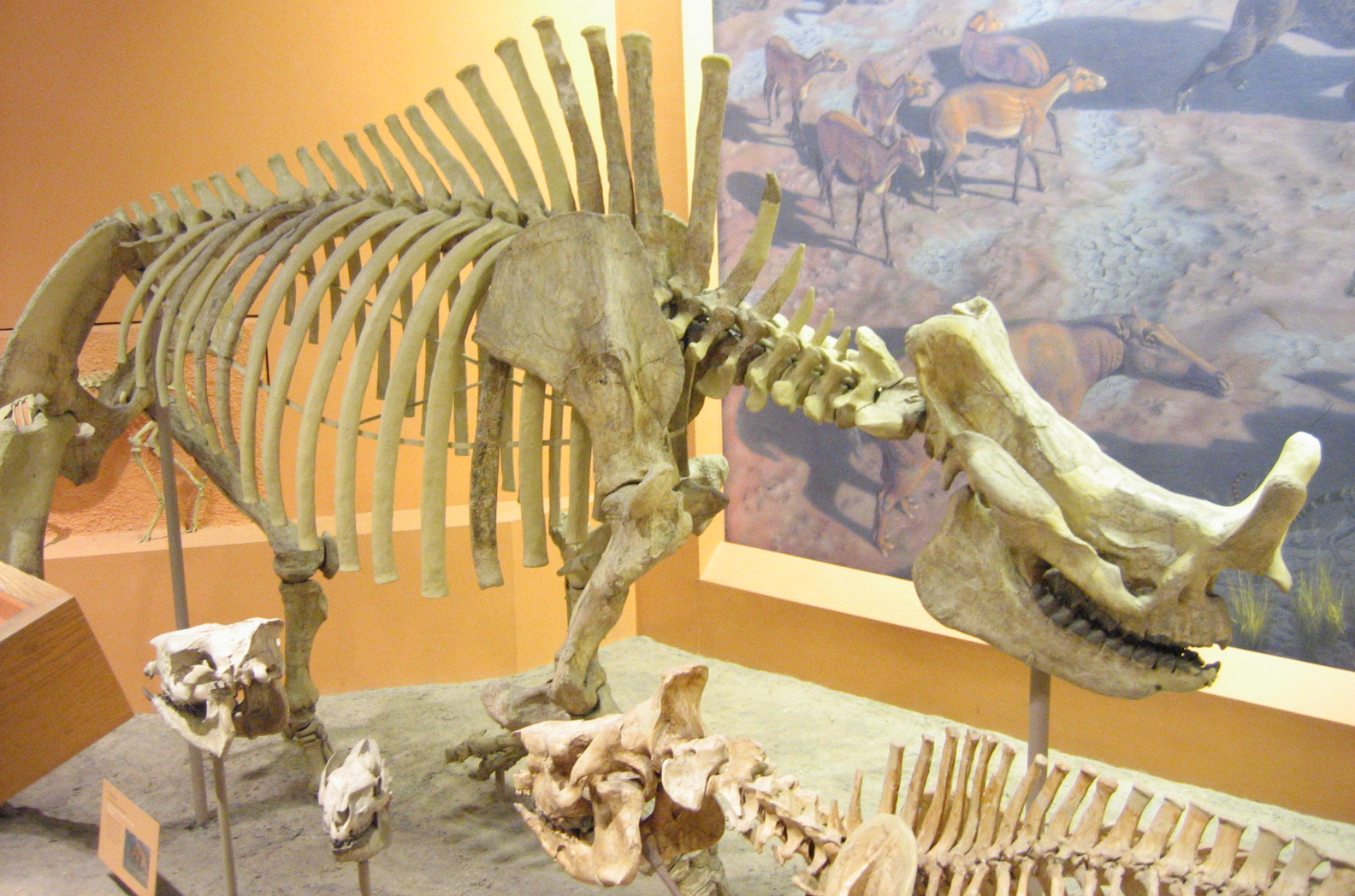
BRADENTON, Fla. (AP) – All that’s left of the massive Oligocene beast is its fossilized skull, which stretches 2 feet long and weighs 75 pounds. That puts a burden on the imagination to fill in the missing hide, fur, sinew and everything else about an extinct mammal that stood 8 feet tall at the shoulders and weighed four times as much as a rhinoceros.
Thirty-five million years ago, the aptly named Titanothere is believed to have roamed the Great Plains of modern-day Nebraska in herds as vast as American bison. To find the remains of those mega-herbivores today, you have to know where to dig. And Jim Toomey knows where to dig; after all, he owns and leases property in those remote Cornhusker badlands.
A few years back, Toomey was scanning auction items of an online brokerage house when he stopped at canisters of old 1970s-era Viking Mars mission film. Figuring they might be of intrinsic historic value, he purchased the footage, sight unseen, and donated it to the museum.
Upon discovering the Viking material had re-emerged at the South Florida Museum, Mars mission researchers at NASA’s Jet Propulsion Laboratory were ecstatic. They had lost track of those particular Viking records long ago. In October, JPL dispatched Low Density Supersonic Decelerator expert Ian Clark to retrieve the film; in exchange, Clarke agreed to give a lecture about the latest braking innovations for the next generation of Mars landers. The planetarium seats were packed.
“Well, I’m pretty much a paleontologist, but I just like science,” says Toomey, who donated a 138-pound meteorite to the museum in 2012. “And I’m always looking for things that will help draw crowds or enhance the visitor experience. I like a museum this size because I can make a difference.”
A longtime member of the museum’s board of trustees, the 49-year-old Bradenton entrepreneur and philanthropist is perfectly positioned for the national transition into STEM (science, technology, engineering and mathematics) education. His Toomey Foundation for the Natural Sciences has been assisting related projects for the last 15 years, perhaps most conspicuously the mile-long Gainesville Solar Walk display – a 4 billion-to-1 outdoor scale model of planetary spatial distances in the solar system – near the University of Florida.
The Titanothere skull, which will be cleaned up for display, is a trophy from last summer’s Nebraska field trip. Over the past six years, according to Rodgers, 75 teachers from public, private and parochial schools have trekked into the rugged outback, paying their own travel but getting free room and board for a week’s worth of working the quarries.
Owner of a Rollins College MBA and involved with various local development interests, Toomey isn’t a formally educated paleontologist, but he speaks with an academician’s vocabulary when discussing the prehistoric age. Encouraged by fossil-collecting parents, Toomey spent much of his childhood combing the banks of the Caloosahatchee River for traces of ancient mammal, shark and Native American activity.
Partial to invertebrates because “they’re easy to dig out,” Toomey would gravitate to what used to be one of the most fossil-rich repositories in Florida – the old Apac mine in Sarasota, since transformed into Benderson Park. That’s where he recovered a huge walrus tusk segment, which now resides at the Florida Museum of Natural History. At another quarry, Toomey excavated a tusk that predated all other Florida specimens by six million years.
Toomey’s passion remains the work of his Foundation, and the untold stories waiting to be unlocked by the right balance of curiosity and perseverance. In fact, he and a team of researchers are hoping to visit Cuba to explore the state of paleontology in the island nation.
“Science changes, ideas change. New discoveries are always made that change your thought process, and you have to be able to change and adapt with that as time goes on,” he says. “We haven’t pigeon-holed ourselves to just doing paleontology or archaeology, we’re looking at botany and astronomy and all the natural sciences together.
“Because we know that at some point, they were all just one.”
___
By BILLY COX, The Sarasota Herald-Tribune
Information from: Sarasota (Fla.) Herald-Tribune, http://www.heraldtribune.com
Copyright 2016 Associated Press. All rights reserved. This material may not be published, broadcast, rewritten, or redistributed.
AP-WF-01-06-16 1509GMT


